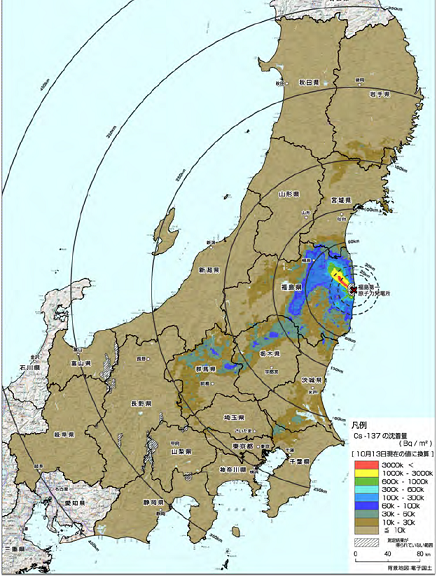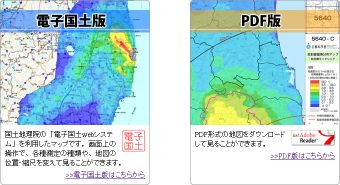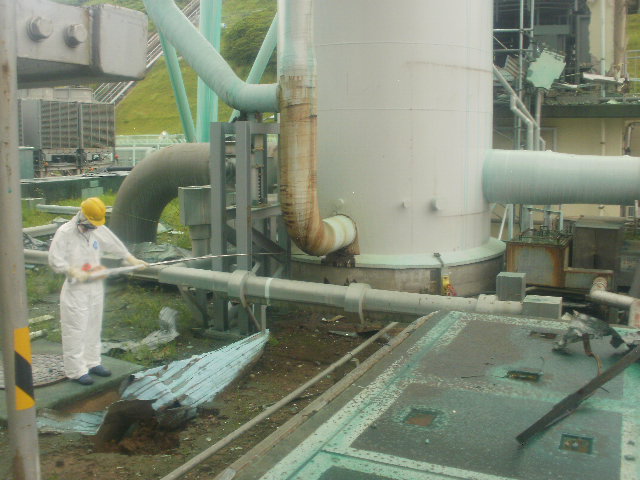When people ask me how things are here in Japan after the Fukushima nuclear disaster, I tell them life is mostly normal for my family down here in Tokyo, except that we are very careful what we eat. Given the relatively high food prices in Japan I used to pay more attention to how much things cost, but now I watch more where everything is from. I do it not just for me and my wife but also for our kids (two teenagers).
I really do feel sorry for the farmers in areas affected by the radioactive plumes released after the cores of units 1, 2 and 3 melted down and the buildings of units 1, 3 and 4 blew up in hydrogen explosions, but I largely avoid several prefectures as places of origin. I do not have faith in the government or the food distributors to protect us. The sad fact is, there is very limited capacity for inspections and the surprises just keep on coming. Consumer level geiger counters are not suitable for food safety inspections. That takes high end hardware that costs more than US$100,000 apiece and it’s very time consuming. There are not many of these machines around.
Much of the early radioactive scares were about iodine 131, which decays with a half life of only 8 days. It showed up in Tokyo drinking water and in leafy vegetables as far south as Chiba, in Tokyo’s commuter belt. Within 2 months more than 99% of that I-131 had decayed. By now it’s no longer an issue.
Then attention turned to cesium, which is a more long term problem. It will be with us for much longer, for the rest of our lives in the case of Cs-137 (half life: 30 years). If ingested, about half of radioactive cesium is removed again from the body every 3 months, so it’s not as severe as strontium, which stays in the bones forever, but any internal contamination must be taken seriously. There are parts of my native Bavaria, 1200 km from Chernobyl, where 25 years later most wild pigs shot by hunters still have to be disposed of because they exceed government limits for radioactive cesium. They tell us the radioactive release from Fukushima was much smaller than from Chernobyl, but we’re also much closer to it than Germany was to Ukraine and much of our food is grown even closer to it.
Japanese tea as far away as Shizuoka, some 300 km from Fukushima-I, has exceeded government limits for cesium. Rice straw from northern Miyagi prefecture, some 150 km north of Fukushima-I was too contaminated to be fed to cattle.
Rice prices in shops have increased 20-30% recently, from under 1500 yen per 5 kg bag to 1800-2000 yen per bag. This is the result of consumers stocking up on 2010 rice ahead of the next harvest, which is less than 2 months away. People appear to be concerned about what levels of cesium will be measured in 2011 rice. Beef exceeding government limits had already made it to supermarket shelves and dinner tables before the problem was detected, so people are naturally concerned if this won’t also happen with rice. It’s not an easy problem. By mixing rice from different areas, perhaps no single bag of blended rice exceeds government limits, but that is not the answer. According to current scientific theory, a given amount of radioactivity does not cause fewer cases of cancer by spreading it over more people. The proper answer would be to test rice from every field that is potentially affected and exclude rice from contaminated production areas. Naturally farmers will want compensation for food that can’t be sold, which ultimately will be paid by the government. This sets up a direct conflict of interest: The more testing the government does and the more it does to not dilute contaminated rice among uncontaminated rice, the more money it will have to pay to farmers. It is hard to have confidence that consumer safety will take priority under these circumstances.
A lot of the vegetables for stores in Tokyo are grown in Ibaraki, Fukushima prefecture’s southern neighbour, but whenever I can, I buy produce grown either further north (Hokkaido, Aomori) or further west or south (Gunma, Nagano, Shikoku, Kyushu) or imported (e.g. South Korea). Hokkaido in the far north is about as far from Fukushima-I as Kansai (Osaka, Kyoto) is to the west. Most of the dairy products on my shopping list are now from Hokkaido. Our sea food consumption has gone way down compared to pre-3/11 levels.
Domestically produced (koku-san) foods have been near-religiously venerated in Japan for many years. Consumers have been paying huge markups to eat domestically grown food instead of imports and expected the price to reflect higher quality. For example, I could buy twice was much Chinese eel or three times as much Chinese garlic as their Japanese equivalents for the same money. The Japanese government has maintained domestic rices prices above world market levels. People here always had some suspicion about pesticides or other contaminants in imported food, especially from China, but also from the US. With the nuclear disaster, the tables have turned. Gone is the assumption of safety of “koku-san” food, which will make it hard to maintain the price premium that came with it. The radioactive contamination problem is not just a health worry for millions of Japanese, it is also a devastating blow for the future of farmers and fishermen across much of Japan.



